When I first arrived in the Episcopal Church, one of the things that took me by surprise was the Prayers of the People in the Book of Common Prayer. In the Church of England, it is common practice to write one’s own intercessions. And so, following the sermon and the creed, instead of observing a set pattern from a prayer book, an intercessor offers either prayers they have written themselves or improvises on the spot. The reasons for this are many, among which is not only general liturgical reform in more recent years, but also a need in many communities to ensure that the prayers offered are true to the hearts of those worshipping among the congregation.
Of course, some Episcopalians may find this odd and for different reasons. Indeed, there is something calming, grounding, and comforting in knowing more exactly what is going to happen when you walk into church on a Sunday morning. Nevertheless, independently or communally written, or even extempore prayer is not an unusual tradition within the church, despite the fact that one might not usually find it in a principal weekly service. And I will say that there is something quite beautiful about being able to write your own prayers, share them with others, or, risky though it may be, to improvise and pray extempore in a regular worship setting.
In one parish I know “back home,” the priest often not only improvises the prayers of the people, but replaces the sermon with them. Thus, following the Gospel reading, the congregation is seated, and then the priest or another preacher offers a meditation on the readings given the issues of the day. And the meditation is shared in an intercessory manner, with the responsory, “Lord, in your mercy; Hear our prayer.” When I asked my colleague how they came to such a practice, they told me how, one Sunday, there seemed to be so much going on in the world, and so much in the readings that was challenging, that the only way they could get through the sermon and say anything meaningful, was simply to pray with the congregation. At that moment, the congregation didn’t need to be spoken to or preached at but prayed with. Of course, such mutual, shared ministry and intercession is something clergy and congregations practice together generally. And a priest should never preach at their congregation. Still, by offering intercession in this specific way in corporate worship served as a reminder of the community’s core purpose, especially in times when opinion, belief, and need are diverse.
This week, as we approach another busy transitional season, perhaps we can grant ourselves the opportunity to consider how we pray. As we contemplate the next two weeks; from my institution on Tuesday, to the Holiday Boutique on Thursday and Friday, to Thanksgiving, and indeed Advent and the beginning of a new liturgical year; we see that there is a lot going on. It’s busy, it’s challenging, and, amongst other things happening in our world, it is a time of change for all of us. But if we can grant ourselves the grace and the time to consider how we not only navigate but pray through such experiences, we might just discover something new. As the theologian Karen Kilby says, “a theologian is one who prays, but stumbles in their prayer, but then reflects on their stumbling.” It’s okay to stumble. It’s good to reflect. And it’s vital to pray.
The Rev. Edward Thornley
Rector, The Episcopal Parish of St. John the Evangelist


